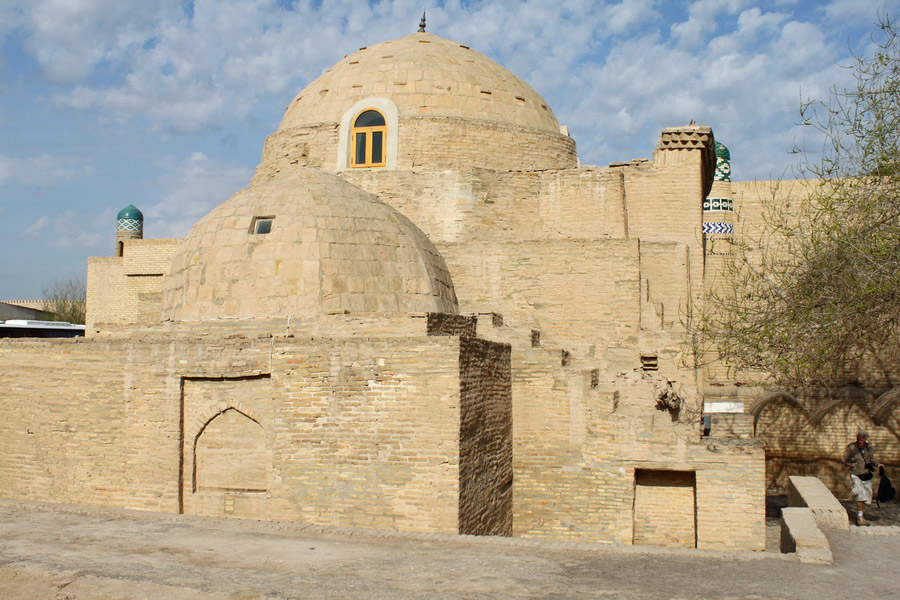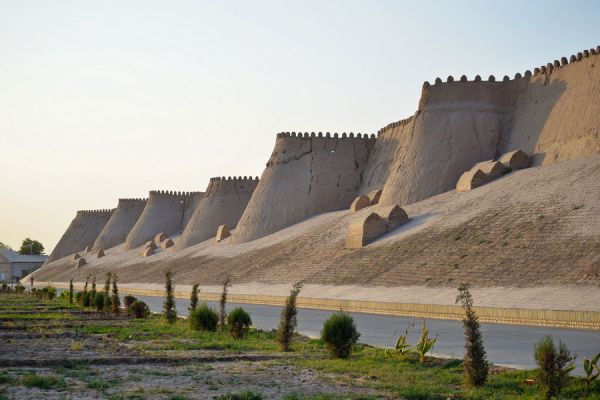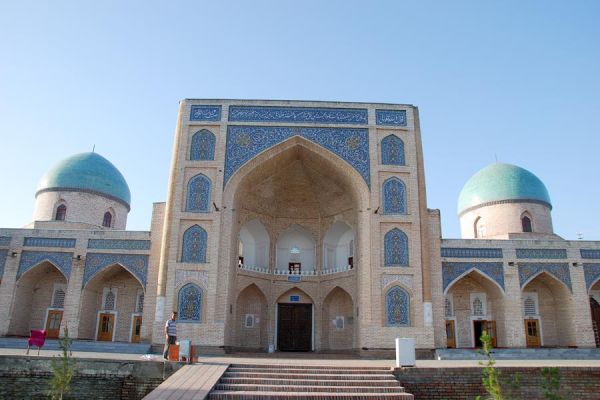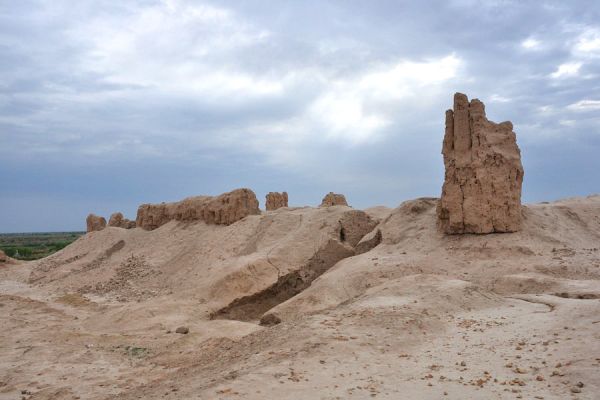Mausoleum of Said Allauddin in Khiva
The mausoleum of Said Allauddin is one of the oldest buildings in Khiva. The mausoleum building is adjacent to the walls of the Matniyaz Divan Begi Madrasah on the east side and is an interesting place to visit while walking around the old town. The mausoleum of Said Allauddin, along with other ancient buildings of Khiva, is included in the UNESCO World Heritage List.
Entrance to the mausoleum of Said Allauddin is free on any day of the week. The attraction is open to the public daily from 08:00 to 17:00. It is better to set aside at least an hour for a detailed acquaintance with the object. If you have enough time, be sure to go up the stairs, from where you can enjoy a beautiful view of the old town of Khiva. Spectacular photos are taken from this place at sunset. The mausoleum is not the most crowded place because of the low—key architecture, so it's nice to relax from the crowds of tourists. There is a shady tree in the courtyard, which provides coolness on a hot day. The newlyweds of Khiva include the mausoleum of Said Allauddin in their wedding itinerary around the old city — at the end of the week, you can meet elegant wedding companies in traditional costumes here.
For believers, the mausoleum is not just a cultural and historical monument, but also a place for annual pilgrimage. It is necessary to treat the pilgrims in the mausoleum with respect: to observe silence inside and have a proper appearance for a visit to a religious building.
History
The building has been rebuilt several times, it is difficult for historians to describe what its original appearance was. The exact date of its foundation is also unknown. All that history has brought to us is the date of the death of one of the noble persons resting here. Said Allauddin was a relative of the Prophet Muhammad, he is known in the east as a righteous man and a Sufi sheikh. Said Allauddin preached Islam in Khiva, he died in 1303. The mausoleum over his grave was erected only half a century later. The architect's name is not known for certain. According to another version, it is assumed that the mausoleum was erected for the repose of the remains of Amir Kulyal, that is, not earlier than the second half of the XIV century.
The nature of some of the large-scale alterations that befell the mausoleum building is also known. Thus, no later than the middle of the 19th century, ruler Allakuli Khan ordered the construction of a square-shaped chapel of ziarat khona to the west of the tomb. This radically transformed the entrance to the mausoleum. By the end of the same century, a pedestal was erected over the new burial of Khan Said Muhammad, who was especially revered in Khiva, uniting it with a neighboring grave, topped with a pair of traditional pointed pommels — sagans.
The architecture of the mausoleum
Despite its inexpressiveness and ingloriousness, the architecture of the mausoleum of Said Allauddin is very interesting: almost all the elements of the building (stepped tromps, domes, walls) are made of clay bricks, roughly hewn and not decorated in any way. This does not look typical at all for the architectural style of Central Asia, which is familiar with its openwork. But the buildings of the Mongolian period are characterized by such minimalism. The simplicity of the building gives the eye a break from the elegantly and variegately decorated sights of Khiva. The rough, minimalistic walls create a striking contrast between the interior and the tombstones lined with bright majolica. The craftsmen maintained the style of Khorezm artists of the 14th century when decorating the tomb, despite the fact that all the works produced belong, according to reliable documents, to the 60s of the century before last. They look even more vivid and impressive here.

















